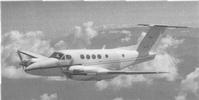


Chapter 7
I The First 100 Years 1788-1888
II Railways
III Motorised Vehicles
IV Aviation
i Local Inventions, Research, Design and Manufacture
ii The Development of Air Transport: The Trail Blazers
iii The Services
iv The Royal Flying Doctor Service
v Ground Aids and Safety Innovations
vi From Aviation to Modern Shipping
V Modern Shipping
VI Innovative Small Craft
VII Conclusion
VIII Acknowledgements
IX Contributors
References
Index
Search
Help
Contact us

The Royal Flying Doctor Service
Whilst the name of the Rev. John Flynn of the Australian Inland Mission of the Presbyterian Church is usually, and quite properly, associated with the inception of this service, two other names should also be mentioned. One is the medical student, Clifford Peel, who, in 1917 suggested the use of aircraft in providing rapid access of, and to, the medical services in the outback (Fig. 31); the other is Alfred H. Traeger, an electrical engineer, who developed and perfected (between 1924 and 1926), the other essential ingredient of the service, namely, the pedal radio, an innovative communication link for the people of outback Australia which also made possible the School of the Air.
The first Flying Doctor base started operations in August 1927, with Dr. K. St. Vincent Welch being the first flying doctor, using a DH50 aircraft. During the first year of operations, 20,000 air-miles were flown in some 50 flights and 255 persons were attended. In 1955, the Service was granted the prefix 'Royal'. Currently the Royal Flying Doctor Service operates from some 13 centres in all States except Victoria, and other medical services, using aircraft, operate in Victoria, New South Wales, South Australia, Queensland and Western Australia. Close to 10,000 flights with patients are being performed yearly throughout Australia. The Royal Flying Doctor Service is an excellent example of a typical Australian innovation which, at its inception, involved the use of two high technology elements -aircraft and radio, in solving a pressing social need.[45]
Organisations in Australian Science at Work - Australian Inland Mission; Presbyterian Church in Australia; Royal Flying Doctor Service; School of the Air
People in Bright Sparcs - Flynn, Rev. John; Peel, Clifford; Schaetzel, Stanley S.; Traeger, Alfred H.; Welch, Dr K. St Vincent
 |
Australian Academy of Technological Sciences and Engineering |  |
© 1988 Print Edition page 515, Online Edition 2000
Published by Australian Science and Technology Heritage Centre, using the Web Academic Resource Publisher
http://www.austehc.unimelb.edu.au/tia/509.html